Timothy Day
I SAW ETERNITY THE OTHER NIGHT
Kings College, Cambridge, and an English Singing Style

ALLEN LANE
UK | USA | Canada | Ireland | Australia
India | New Zealand | South Africa
Allen Lane is part of the Penguin Random House group of companies whose addresses can be found at global.penguinrandomhouse.com
First published 2018
Copyright Timothy Day, 2018
The moral right of the author has been asserted
Cover design: Coralie Bickford-Smith
ISBN: 978-0-241-35219-9
Illustrations

. The sixteen choristers dressed in their Eton suits and top hats walking from school to Chapel in the 1960s in a crocodile, two senior boys at the back keeping order. Its more odd when you go down town in old clothes, jeans and things, and nobody looks at you.
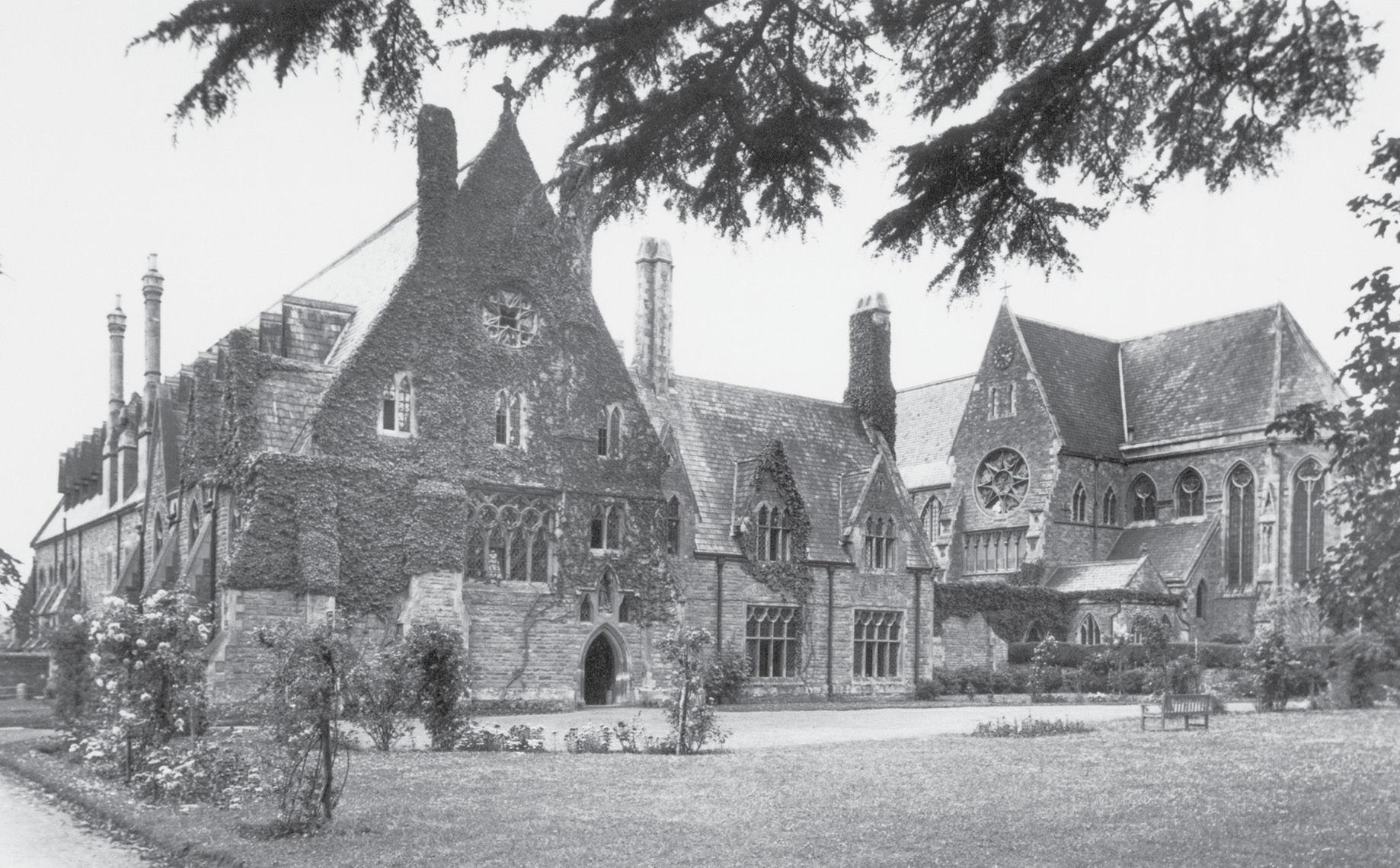
. The College of St Michaels, Tenbury, was established in 1856 with funds provided by Sir Frederick Ouseley (
below). One of the very few senior clergymen who wished the Church of England itself to assume responsibility for training its musicians was the imperious Dean of Hereford, John Merewether (
bottom). He died in 1850, aged 53, before he could realize any of his plans.
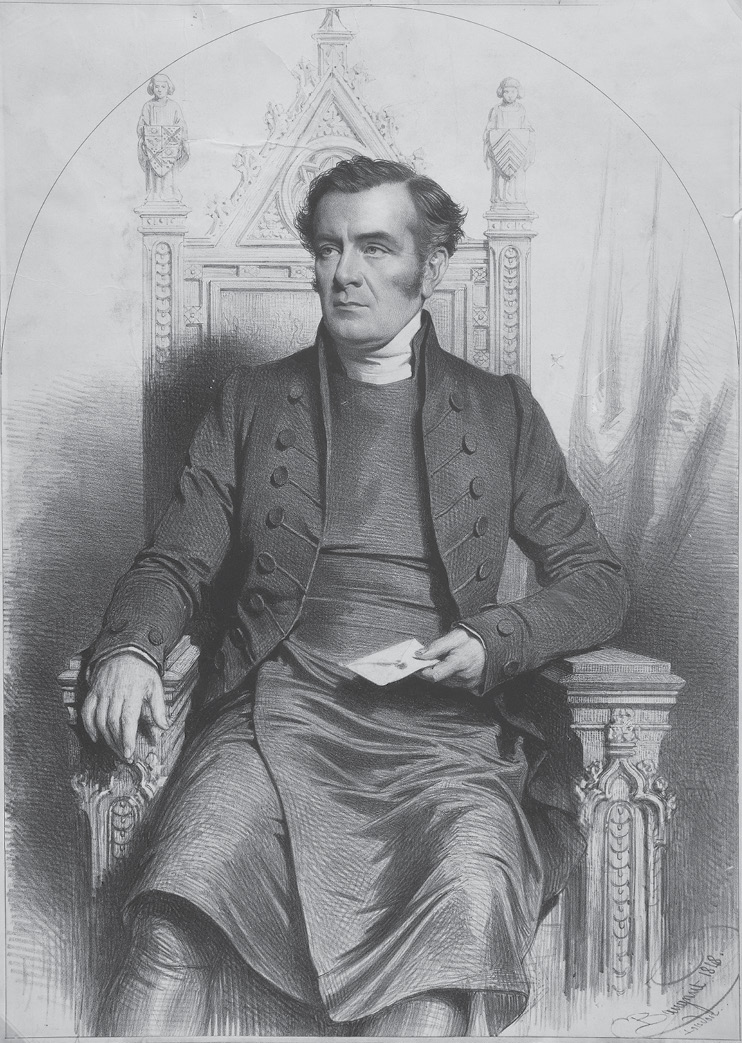
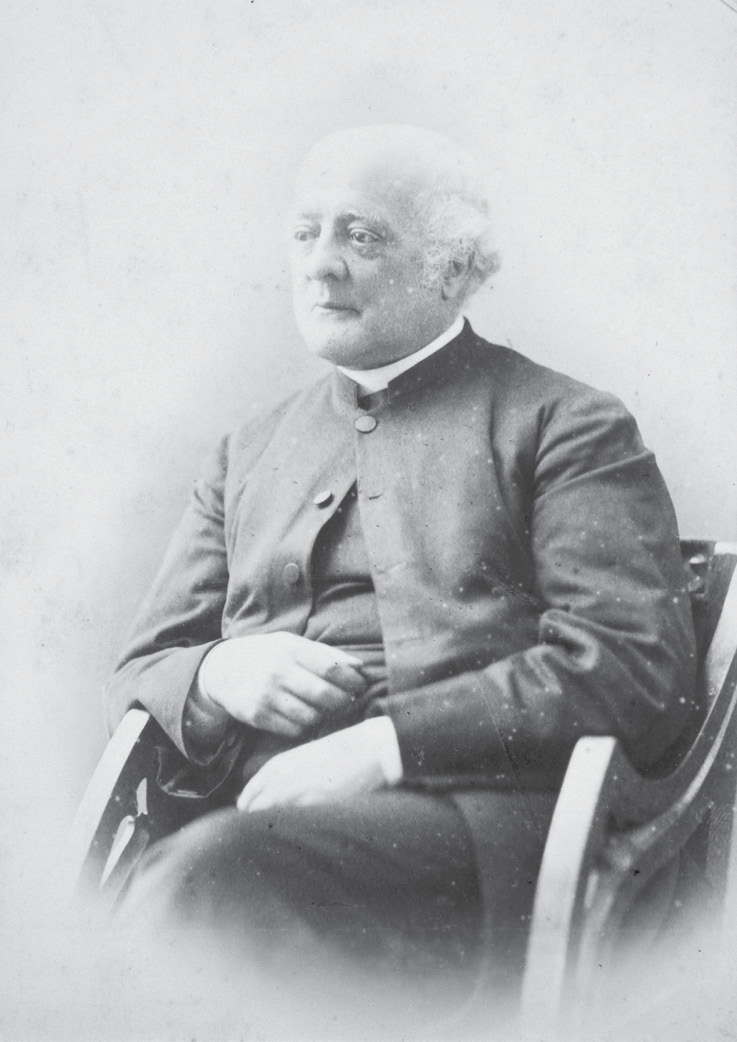
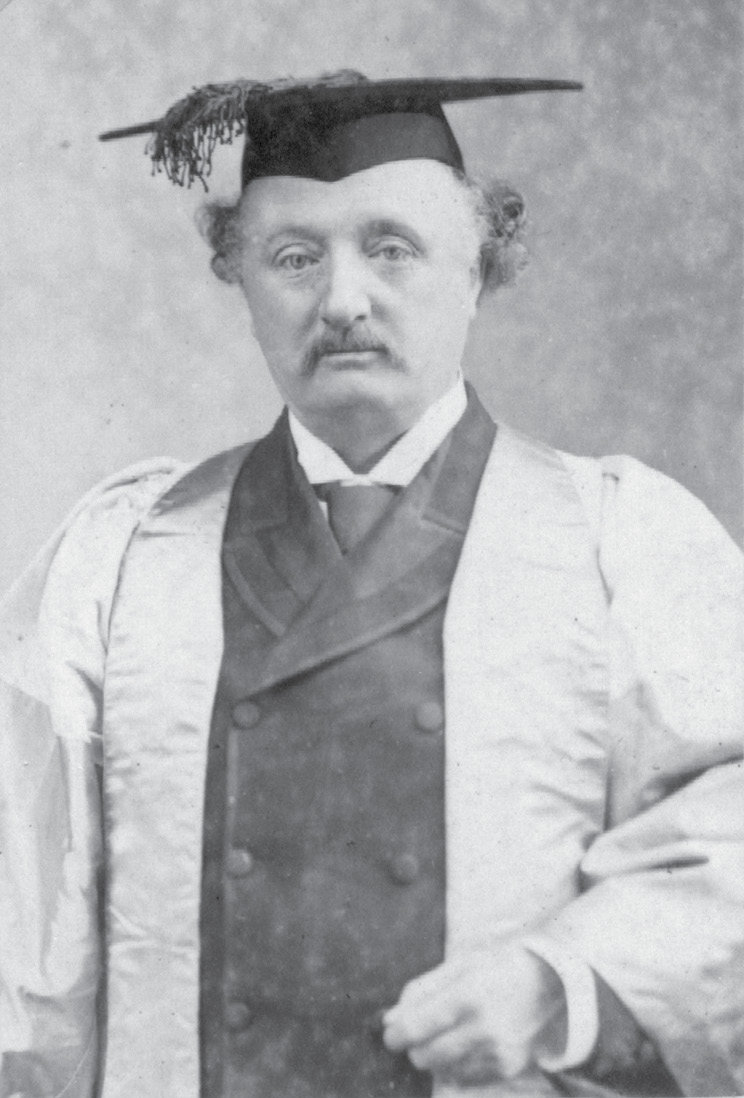
. Sir John Stainer (
above) at St Pauls and Sir Walter Parratt (
below) at St Georges Chapel, Windsor, raised musical standards and enhanced the solemnity of everyday worship. In so doing they also raised the status of the organist and choirmaster and became public figures.
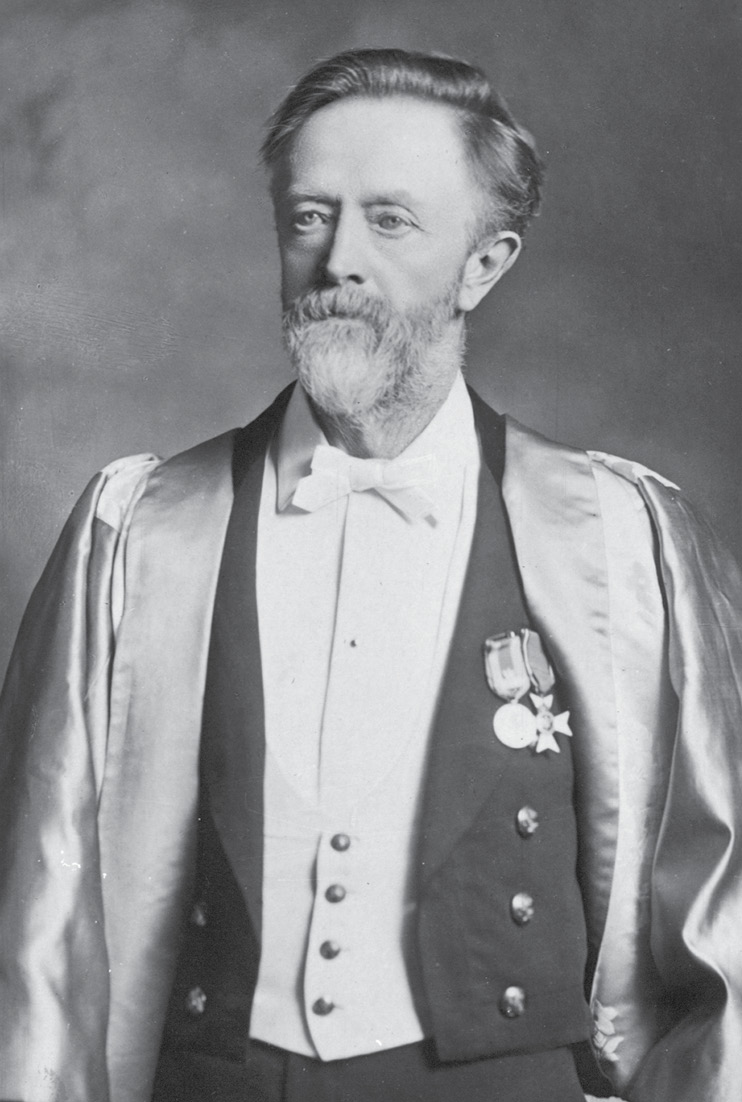
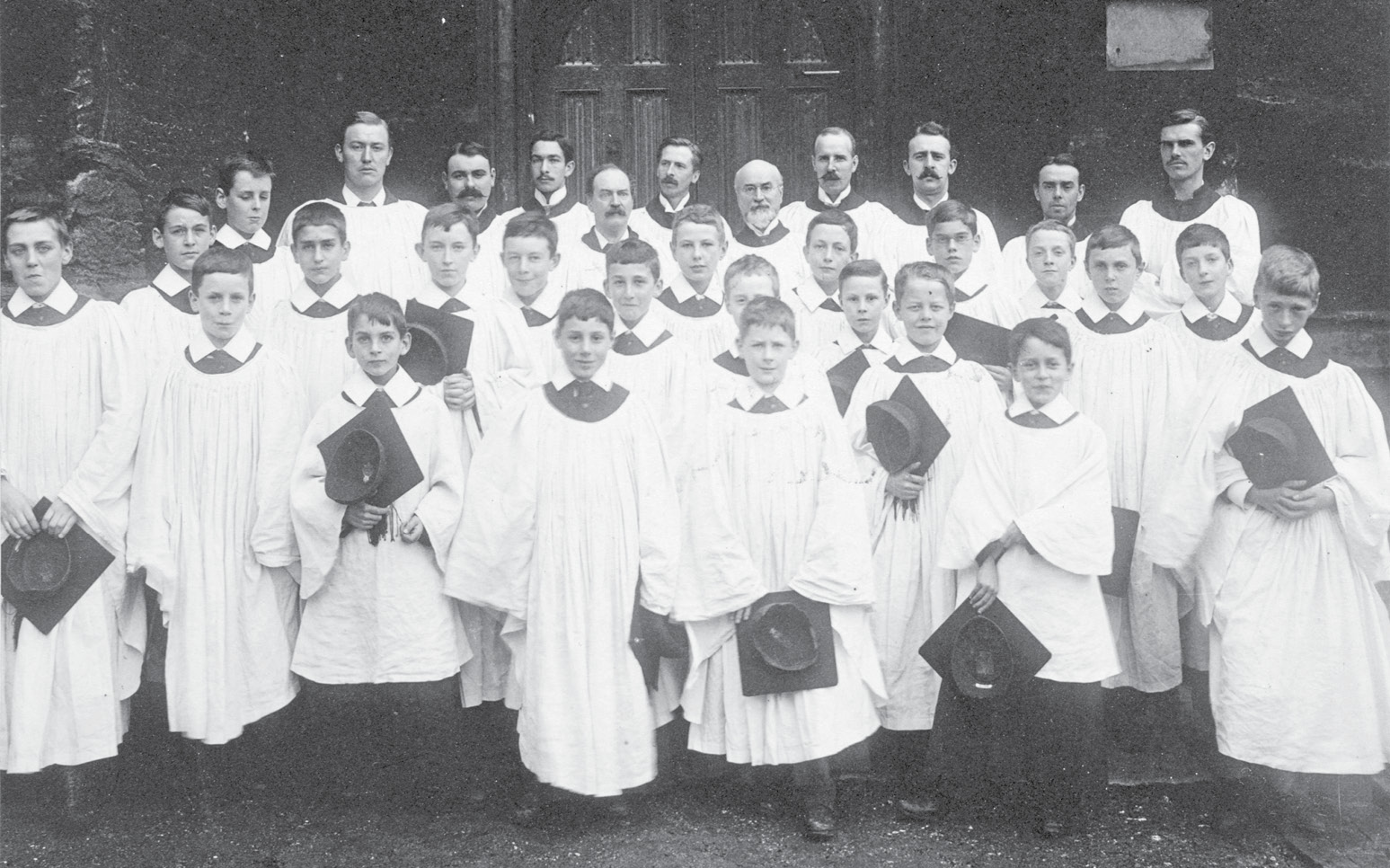
. Parratts choir at St Georges Chapel, Windsor, in 1899.
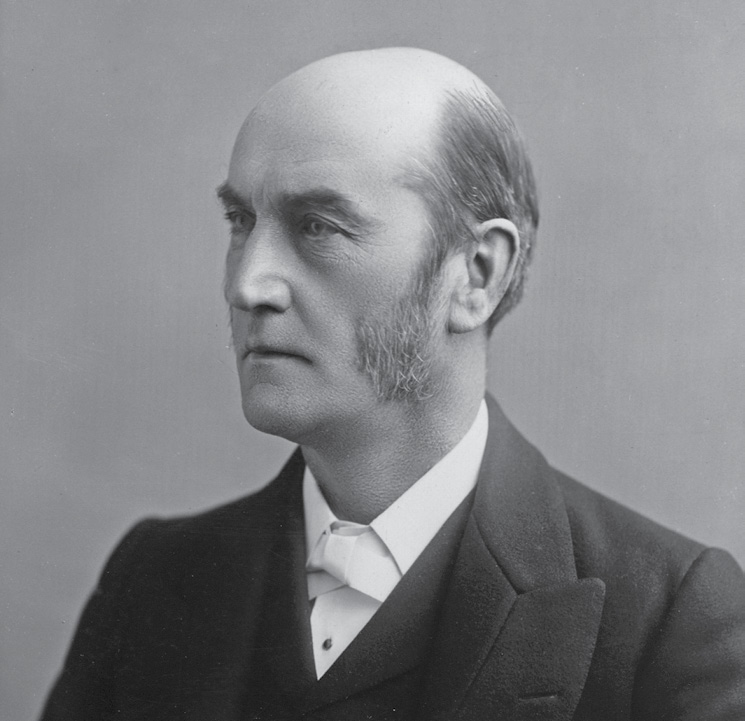
. Augustus Austen Leigh entered Kings in 1859 and was Provost from 1889 until his death in 1905. His familys private liberality funded the choral scholarships for several decades.
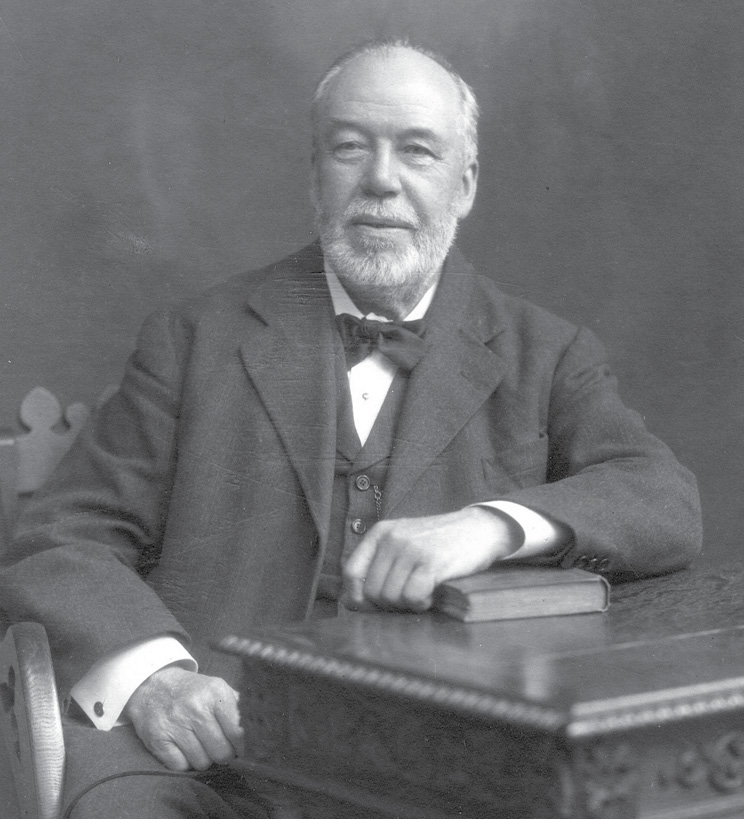
. A. H. Mann, the director of the choir at Kings for over half a century, in the 1920s. He died in office in 1929.

. Advertisement for the first choral scholarship on the front page of the February 1881 issue of
The Musical Times.
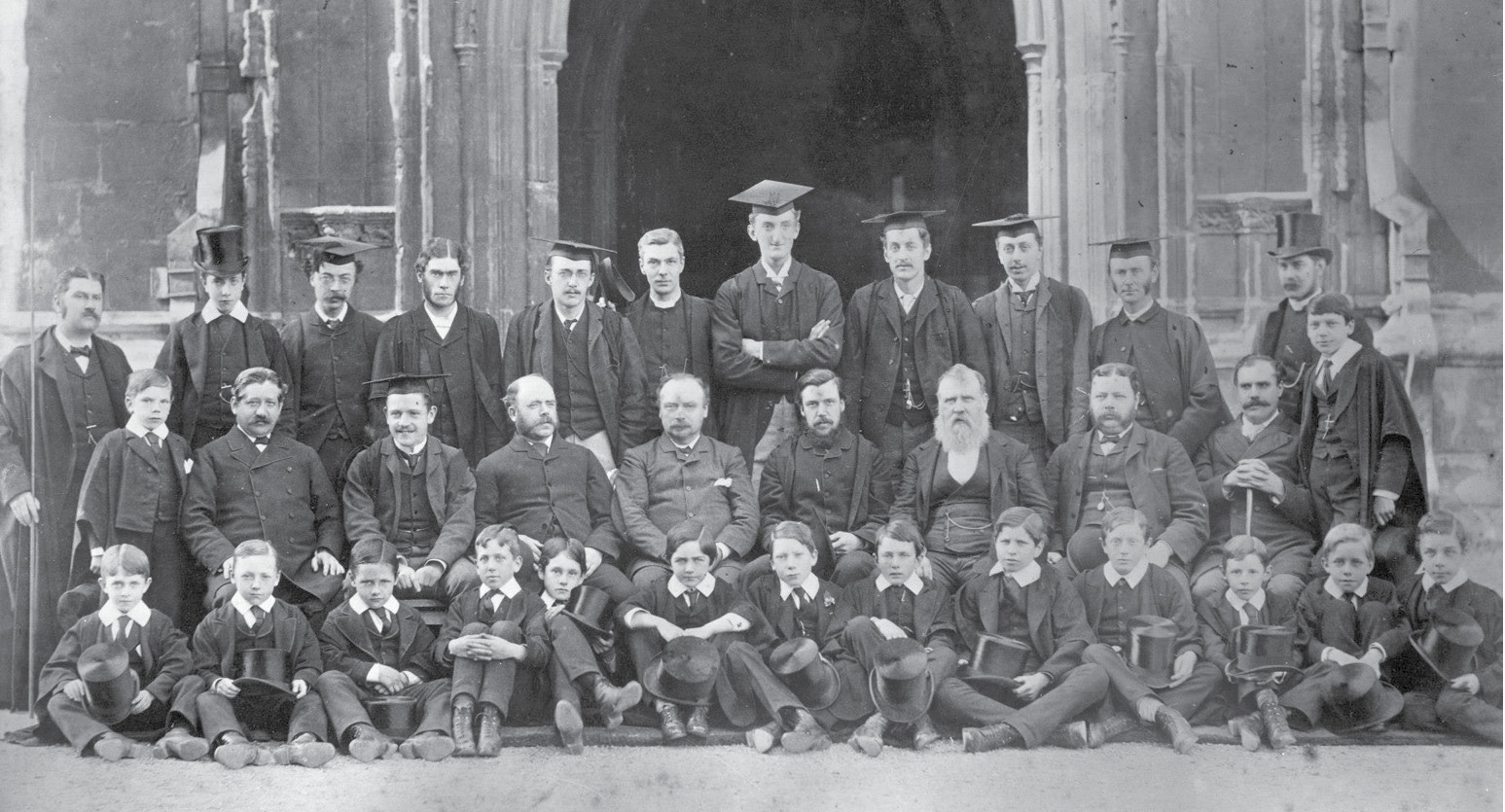
. The choir at Kings in 1884, the earliest known photograph. Fifth from the left on the back row is the first choral scholar, P. A. Thomas. Two away on his left the second, Kenneth Marshall, then his brother Walter, also a choral scholar. Next to him is an undergraduate volunteer in the choir, William Boyle, a splendid fellow , in Manns description. With Mann he compiled the chant book that remained in use into Willcockss day. The other choral scholar is A. A. Hall, in a mortar board in the middle row.
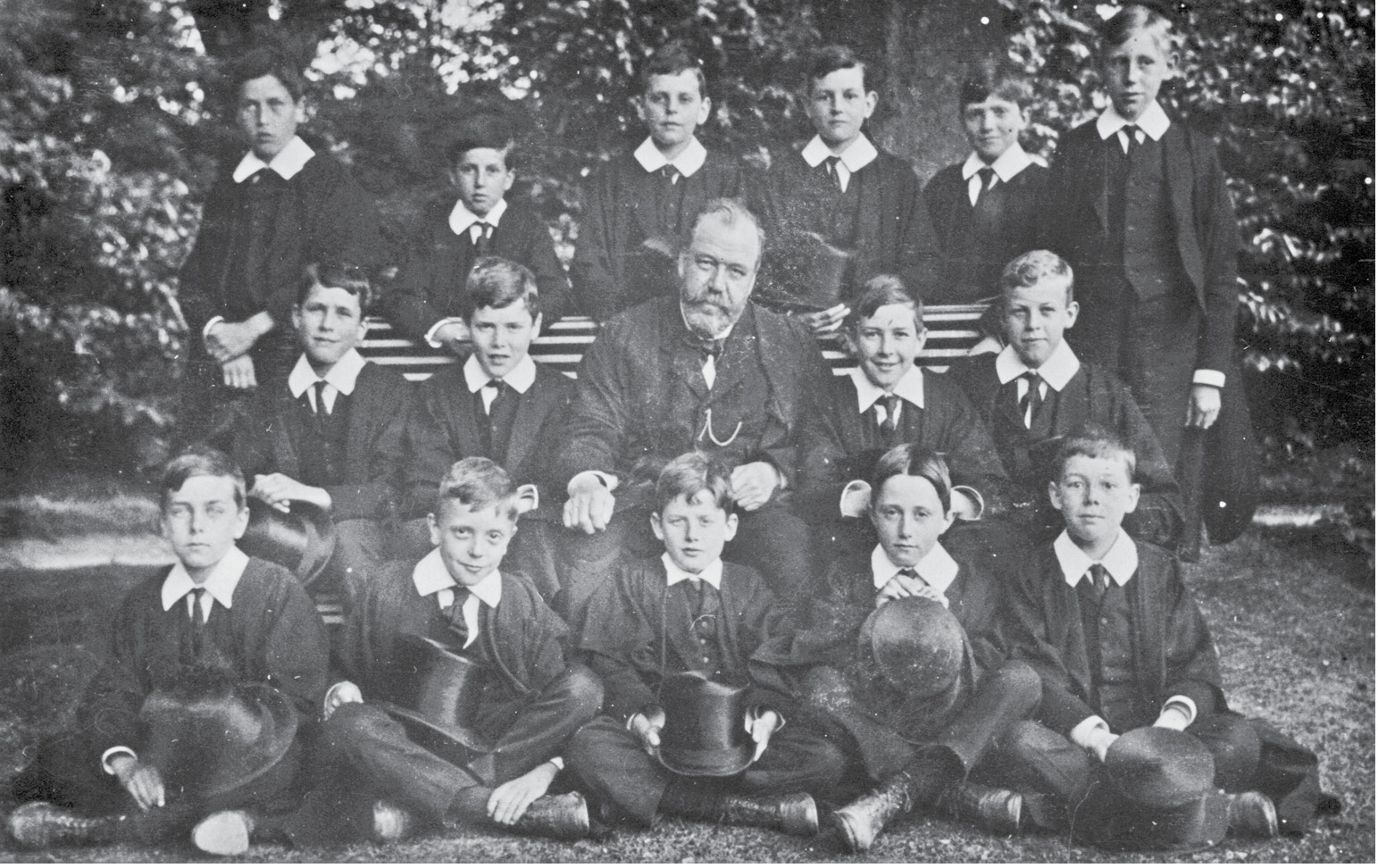
. The much-loved Daddy Mann with his choristers, probably taken in 1914.
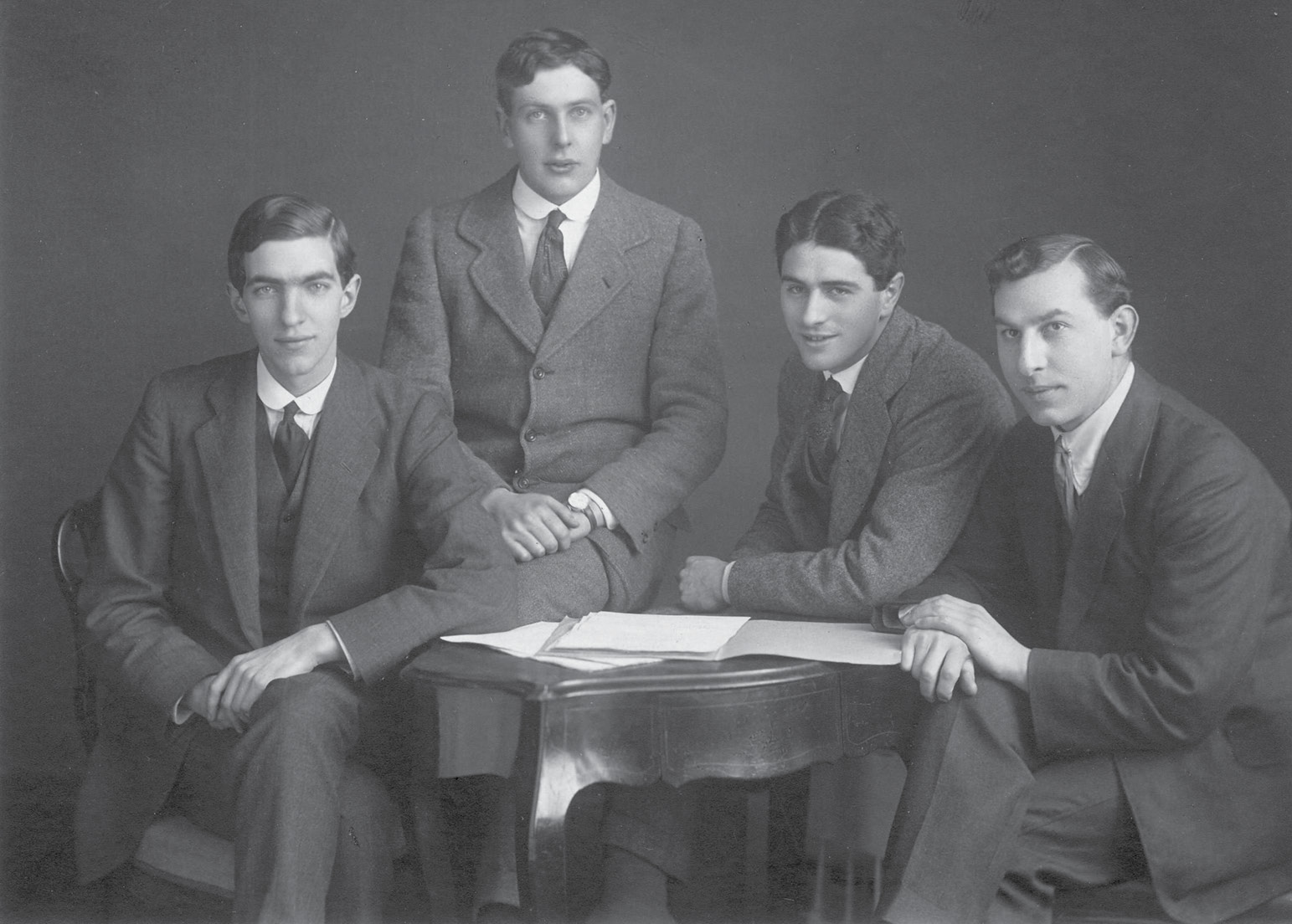
. Four choral scholars in 1911.
Left to right, A. J. W. Willinck, A. R. O. Swaffield, V. H. W. Thomas and H. G. Hiller. Thomas, who played rugby for Cambridge and Wales, was killed in action in September 1916.
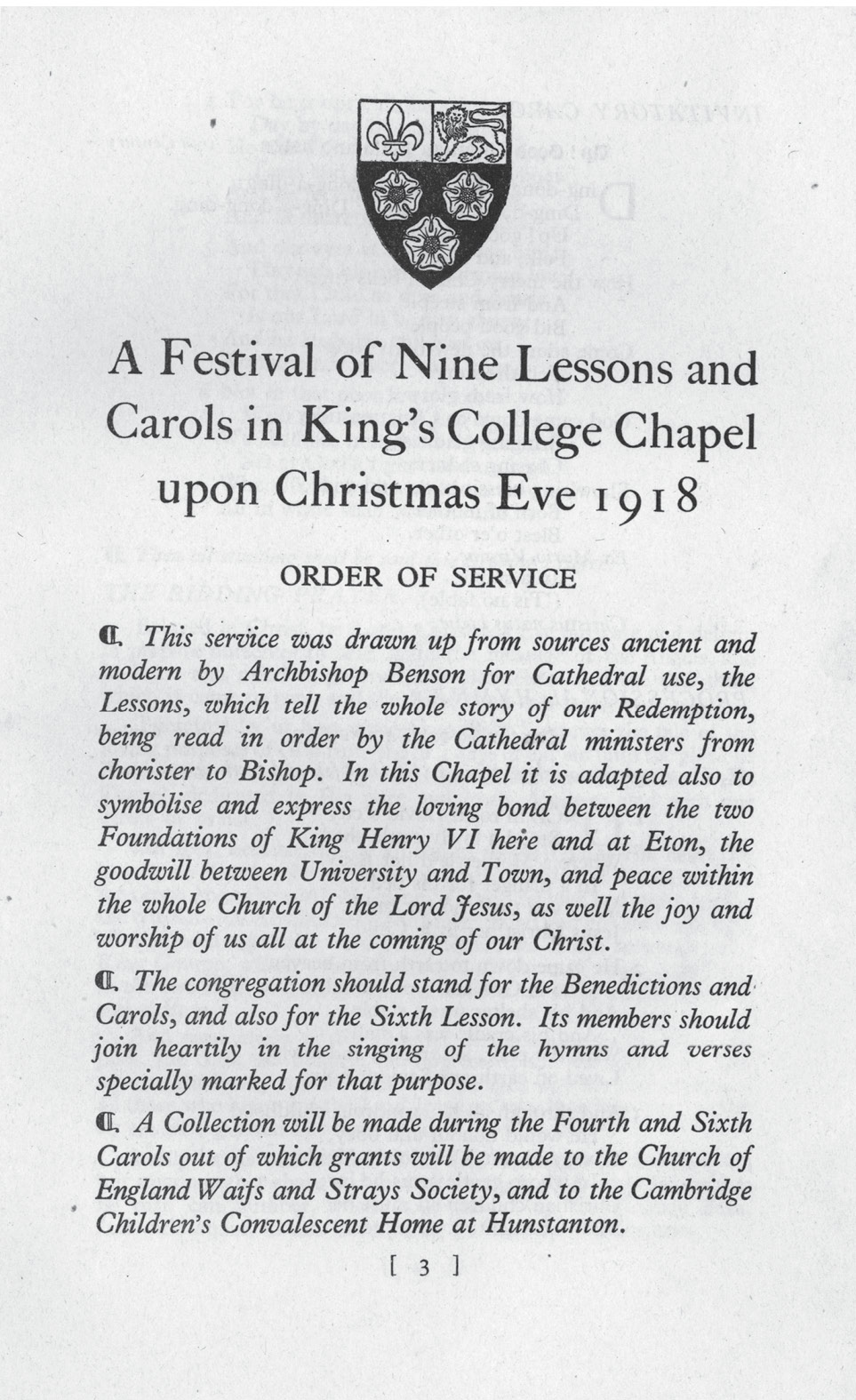
. The Dean of Kings, Eric Milner-White, who devised the Christmas Eve service, began the first in 1918 with the singing by a solo quartet in the organ loft of the Invitatory Carol,
Up! Good Christian Folk. Once in royal Davids city has begun the service since 1919, though the singing of the first verse by a solo treble has been the rule only since the Second World War.
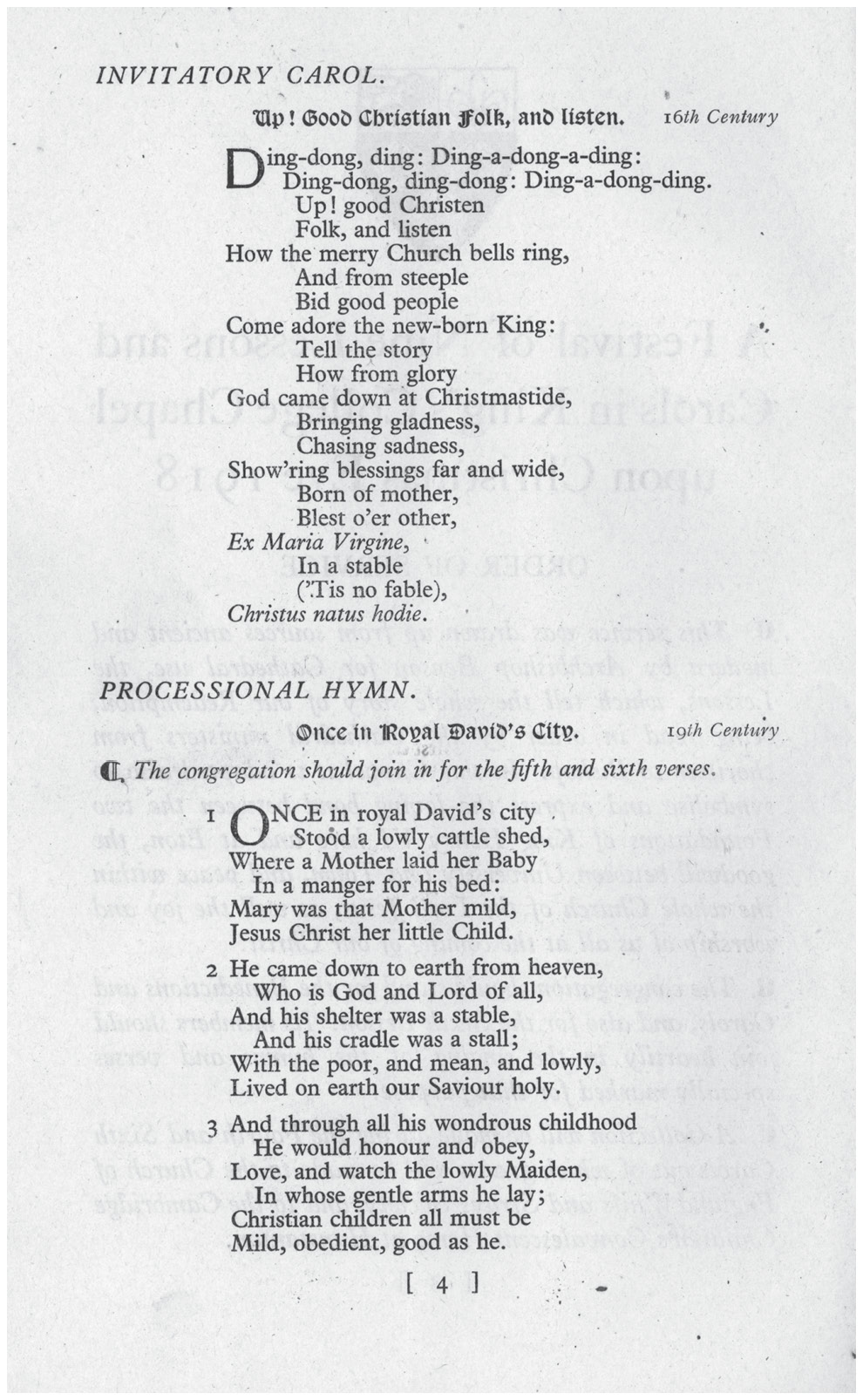
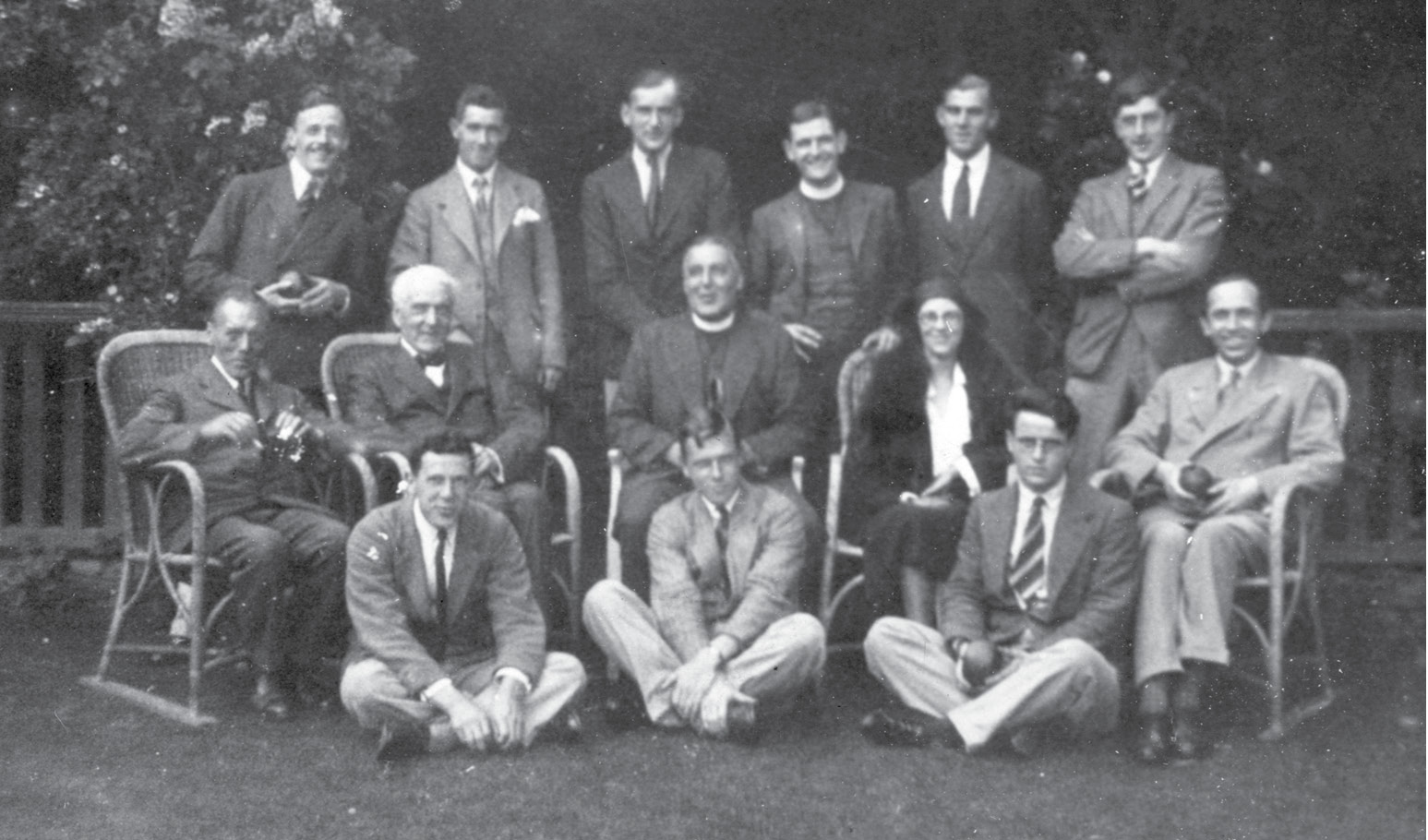
. A group of choral scholars in 1930 with, seated on chairs,
left to right: E. H. Fellowes, Percy Buck, Eric Milner-White, Sylvia Townsend Warner, Boris Ord. Fellowes, Buck and Townsend Warner worked together for a decade editing Tudor church music. It was Ords performances using their performing editions that revealed new beauties in Byrd and Gibbons and Tomkins.
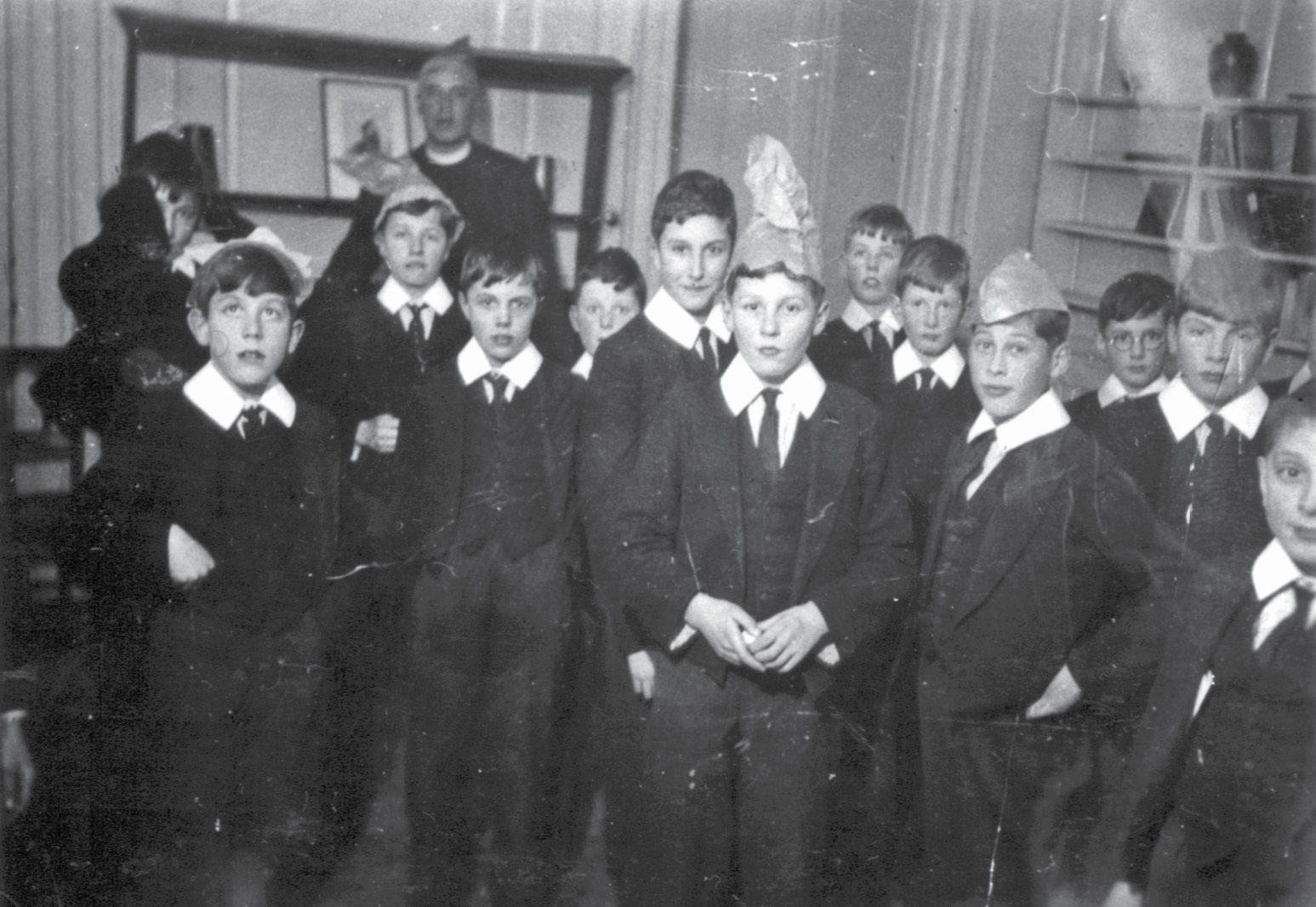
. Milner-White, happy and relaxed in the company of the choristers at the Christmas party he gave for them in 1932.
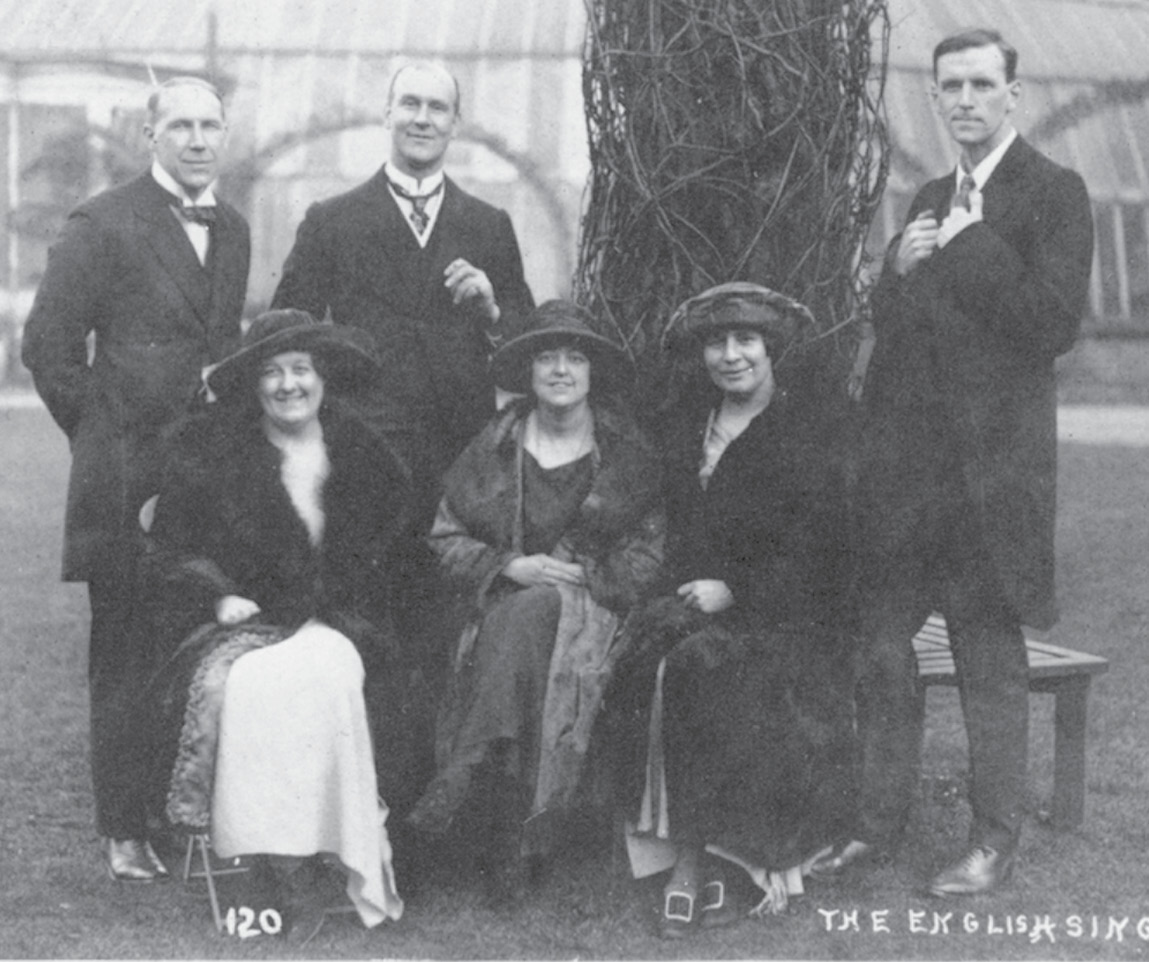
. The English Singers, 1920,
left to right: Cuthbert Kelly, Flora Mann, Clive Carey, Lillian Berger, Winifred Whelen, Steuart Wilson and a programme from one of the groups US tours. It was from listening to and watching the English Singers that Boris Ord understood how to perform Tudor church music.
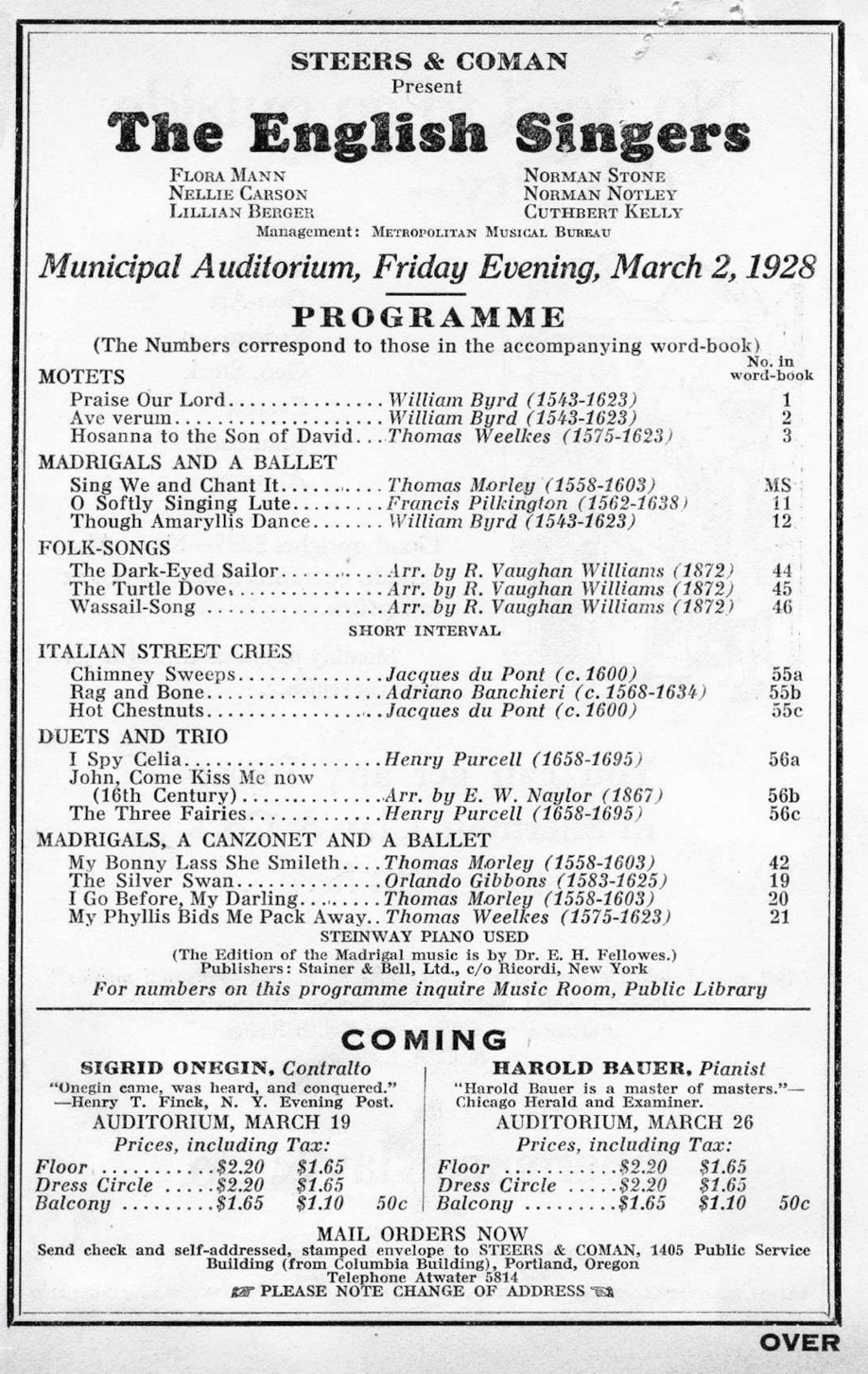





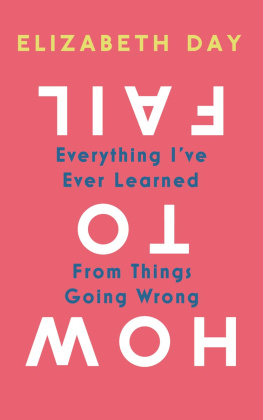

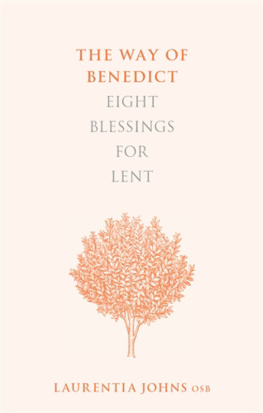


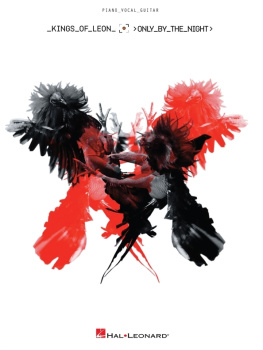
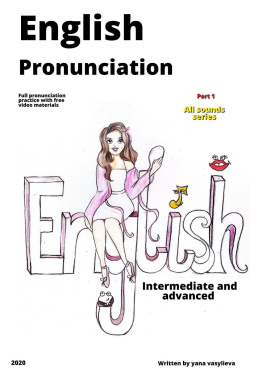
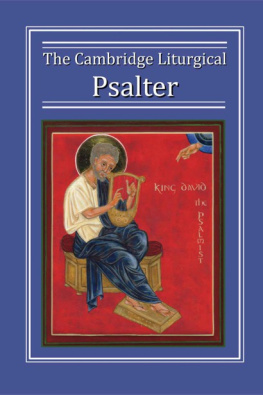
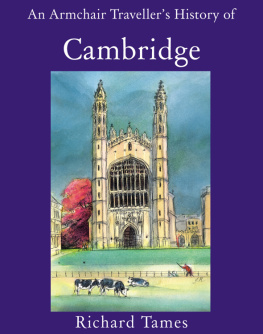
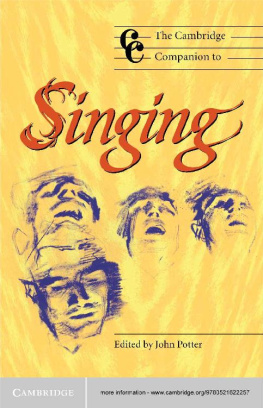



 . The sixteen choristers dressed in their Eton suits and top hats walking from school to Chapel in the 1960s in a crocodile, two senior boys at the back keeping order. Its more odd when you go down town in old clothes, jeans and things, and nobody looks at you.
. The sixteen choristers dressed in their Eton suits and top hats walking from school to Chapel in the 1960s in a crocodile, two senior boys at the back keeping order. Its more odd when you go down town in old clothes, jeans and things, and nobody looks at you. . The College of St Michaels, Tenbury, was established in 1856 with funds provided by Sir Frederick Ouseley (below). One of the very few senior clergymen who wished the Church of England itself to assume responsibility for training its musicians was the imperious Dean of Hereford, John Merewether (bottom). He died in 1850, aged 53, before he could realize any of his plans.
. The College of St Michaels, Tenbury, was established in 1856 with funds provided by Sir Frederick Ouseley (below). One of the very few senior clergymen who wished the Church of England itself to assume responsibility for training its musicians was the imperious Dean of Hereford, John Merewether (bottom). He died in 1850, aged 53, before he could realize any of his plans.

 . Sir John Stainer (above) at St Pauls and Sir Walter Parratt (below) at St Georges Chapel, Windsor, raised musical standards and enhanced the solemnity of everyday worship. In so doing they also raised the status of the organist and choirmaster and became public figures.
. Sir John Stainer (above) at St Pauls and Sir Walter Parratt (below) at St Georges Chapel, Windsor, raised musical standards and enhanced the solemnity of everyday worship. In so doing they also raised the status of the organist and choirmaster and became public figures.
 . Parratts choir at St Georges Chapel, Windsor, in 1899.
. Parratts choir at St Georges Chapel, Windsor, in 1899. . Augustus Austen Leigh entered Kings in 1859 and was Provost from 1889 until his death in 1905. His familys private liberality funded the choral scholarships for several decades.
. Augustus Austen Leigh entered Kings in 1859 and was Provost from 1889 until his death in 1905. His familys private liberality funded the choral scholarships for several decades. . A. H. Mann, the director of the choir at Kings for over half a century, in the 1920s. He died in office in 1929.
. A. H. Mann, the director of the choir at Kings for over half a century, in the 1920s. He died in office in 1929. . Advertisement for the first choral scholarship on the front page of the February 1881 issue of The Musical Times.
. Advertisement for the first choral scholarship on the front page of the February 1881 issue of The Musical Times. . The choir at Kings in 1884, the earliest known photograph. Fifth from the left on the back row is the first choral scholar, P. A. Thomas. Two away on his left the second, Kenneth Marshall, then his brother Walter, also a choral scholar. Next to him is an undergraduate volunteer in the choir, William Boyle, a splendid fellow , in Manns description. With Mann he compiled the chant book that remained in use into Willcockss day. The other choral scholar is A. A. Hall, in a mortar board in the middle row.
. The choir at Kings in 1884, the earliest known photograph. Fifth from the left on the back row is the first choral scholar, P. A. Thomas. Two away on his left the second, Kenneth Marshall, then his brother Walter, also a choral scholar. Next to him is an undergraduate volunteer in the choir, William Boyle, a splendid fellow , in Manns description. With Mann he compiled the chant book that remained in use into Willcockss day. The other choral scholar is A. A. Hall, in a mortar board in the middle row. . The much-loved Daddy Mann with his choristers, probably taken in 1914.
. The much-loved Daddy Mann with his choristers, probably taken in 1914. . Four choral scholars in 1911. Left to right, A. J. W. Willinck, A. R. O. Swaffield, V. H. W. Thomas and H. G. Hiller. Thomas, who played rugby for Cambridge and Wales, was killed in action in September 1916.
. Four choral scholars in 1911. Left to right, A. J. W. Willinck, A. R. O. Swaffield, V. H. W. Thomas and H. G. Hiller. Thomas, who played rugby for Cambridge and Wales, was killed in action in September 1916. . The Dean of Kings, Eric Milner-White, who devised the Christmas Eve service, began the first in 1918 with the singing by a solo quartet in the organ loft of the Invitatory Carol, Up! Good Christian Folk. Once in royal Davids city has begun the service since 1919, though the singing of the first verse by a solo treble has been the rule only since the Second World War.
. The Dean of Kings, Eric Milner-White, who devised the Christmas Eve service, began the first in 1918 with the singing by a solo quartet in the organ loft of the Invitatory Carol, Up! Good Christian Folk. Once in royal Davids city has begun the service since 1919, though the singing of the first verse by a solo treble has been the rule only since the Second World War.
 . A group of choral scholars in 1930 with, seated on chairs, left to right: E. H. Fellowes, Percy Buck, Eric Milner-White, Sylvia Townsend Warner, Boris Ord. Fellowes, Buck and Townsend Warner worked together for a decade editing Tudor church music. It was Ords performances using their performing editions that revealed new beauties in Byrd and Gibbons and Tomkins.
. A group of choral scholars in 1930 with, seated on chairs, left to right: E. H. Fellowes, Percy Buck, Eric Milner-White, Sylvia Townsend Warner, Boris Ord. Fellowes, Buck and Townsend Warner worked together for a decade editing Tudor church music. It was Ords performances using their performing editions that revealed new beauties in Byrd and Gibbons and Tomkins. . Milner-White, happy and relaxed in the company of the choristers at the Christmas party he gave for them in 1932.
. Milner-White, happy and relaxed in the company of the choristers at the Christmas party he gave for them in 1932. . The English Singers, 1920, left to right: Cuthbert Kelly, Flora Mann, Clive Carey, Lillian Berger, Winifred Whelen, Steuart Wilson and a programme from one of the groups US tours. It was from listening to and watching the English Singers that Boris Ord understood how to perform Tudor church music.
. The English Singers, 1920, left to right: Cuthbert Kelly, Flora Mann, Clive Carey, Lillian Berger, Winifred Whelen, Steuart Wilson and a programme from one of the groups US tours. It was from listening to and watching the English Singers that Boris Ord understood how to perform Tudor church music.